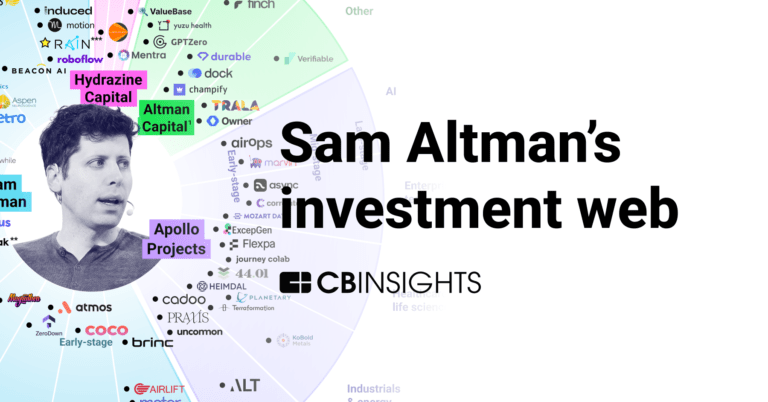
Exowatt
Founded Year
2023Stage
Series A | AliveTotal Raised
$90MLast Raised
$35M | 5 mos agoMosaic Score The Mosaic Score is an algorithm that measures the overall financial health and market potential of private companies.
+57 points in the past 30 days
About Exowatt
Exowatt is a renewable energy company that provides modular solutions for energy generation and storage. Its offerings include a system that captures solar energy, stores it as heat, and generates electricity on demand for commercial and industrial applications. Exowatt's technology aims to provide renewable energy and reduce carbon emissions. It was founded in 2023 and is based in Miami, Florida.
Loading...
ESPs containing Exowatt
The ESP matrix leverages data and analyst insight to identify and rank leading companies in a given technology landscape.
The solar-plus-storage providers market offers integrated solar photovoltaic (PV) and energy storage solutions for residential and commercial customers. These providers design, install, and maintain customized systems that combine solar panels with battery storage, using advanced technology and data analytics to optimize energy efficiency and cost savings. Services include comprehensive project ma…
Exowatt named as Challenger among 15 other companies, including Tesla, Enphase Energy, and Sunrun.
Loading...
Research containing Exowatt
Get data-driven expert analysis from the CB Insights Intelligence Unit.
CB Insights Intelligence Analysts have mentioned Exowatt in 1 CB Insights research brief, most recently on Apr 7, 2025.
Expert Collections containing Exowatt
Expert Collections are analyst-curated lists that highlight the companies you need to know in the most important technology spaces.
Exowatt is included in 1 Expert Collection, including Renewable Energy.
Renewable Energy
4,803 items
Exowatt Patents
Exowatt has filed 6 patents.
The 3 most popular patent topics include:
- energy conversion
- photovoltaics
- solar thermal energy

Application Date | Grant Date | Title | Related Topics | Status |
|---|---|---|---|---|
9/27/2024 | Photovoltaics, Solar thermal energy, Solar power, Energy conversion, Solar energy | Application |
Application Date | 9/27/2024 |
|---|---|
Grant Date | |
Title | |
Related Topics | Photovoltaics, Solar thermal energy, Solar power, Energy conversion, Solar energy |
Status | Application |
Latest Exowatt News
Sep 9, 2025
RE+ brings together over 40,000 participants across the solar, storage, hydrogen, EV infrastructure, and grid-edge sectors, including a solid lineup of international companies. For anyone looking to break into the clean tech space or deepen their industry network, this is the best single place to start. If I were a job seeker in clean tech, I would not miss this event. RE+ offers a rare opportunity to meet the people who are shaping the industry, particularly those with hiring authority. The expo halls are filled with exhibitors ranging from early-stage startups to established players with large pipelines of commercial projects. Whether your focus is batteries, solar, or EV charging, this is where the industry comes together. This year, my attention was drawn to three companies tackling one of the sector's most pressing issues: battery innovation. What unites these companies is a commitment to improving grid resiliency, though each takes a radically different approach to battery chemistry. Fullmark Energy : Grid-Scale Lithium-Ion Batteries Based in California, Fullmark Energy is a fast-moving independent power producer exclusively focused on storage. With a 4 GW development pipeline, it is building projects that treat batteries not as accessories to solar arrays, but as standalone infrastructure assets central to grid stability and performance. Chris McKissack, CEO of Fullmark, is blunt about the need to shift public perception on battery storage. "Early events in the industry manifested with bad publicity," he said. "There is no publicity about nothing happening." In other words, today's projects are engineered with robust safety systems, informed by declining incident rates and tighter manufacturing and design standards. The company's Redwood Project Portfolio is a case in point. Spread across Southern California, it includes projects like the Ortega (20 MW/40 MWh) facility in Lake Elsinore and Desert-Carris (20 MW/40 MWh) in Palm Springs. These projects reflect a community-first development model that involves local stakeholders early and consistently. Ortega, for example, prioritized community concerns through conservation efforts that met California wildlife standards and upgrades to local infrastructure, including water lines for neighboring businesses and improved landscaping. Fullmark also invests in local labor, aligning with domestic content requirements and the recent emphasis on apprenticeship programs. “Permitting is a community engagement exercise,” said McKissack. “We must involve the communities early, hire locally, and demonstrate benefits, whether through grid reliability, economic activity, or workforce development.” Forbes Daily: Join over 1 million Forbes Daily subscribers and get our best stories, exclusive reporting and essential analysis of the day's news in your inbox every weekday. Email Address Technologically, the company leans on its proprietary Medea dispatch platform to manage its portfolio with minute-by-minute optimization for safe and efficient operation. This operational excellence matters as utilities adapt to increasing electricity demand. “Every three percent of GDP growth translates into roughly 1.5 percent of electric demand growth,” McKissack said. Batteries are now central to how the grid manages supply and demand. 2. CMBlu Energy: Organic Batteries Without Lithium CMBlu Energy , based in Germany and expanding in the United States, is developing batteries that replace critical minerals with carbon-based molecules. Its Organic SolidFlow technology is designed for long-duration storage, targeting commercial and utility-scale customers who need performance beyond what lithium-ion typically offers. “Our product's energy density is now on par with lithium ion batteries,” said Giovanni Damato, President of CMBlu Energy, Inc. The CMBlu battery uses a mix of carbon-based liquid electrolytes and a stationary polymer solid. The tank holds 60 percent water and avoids flammable materials entirely. “The tank is filled with polymers looking like coffee beans,” Damato said. The chemistry allows for flexible system design. Operators can scale up either power or duration, depending on need. The technology is aimed at five to ten hour discharge applications, with potential to reach 24 hours. The components (tanks, polymers, pumps) are standard industrial parts, many of which can be sourced locally in the United States. CMBlu has pilot projects in Arizona and Wisconsin. One is with Salt River Project near Phoenix, where data center growth is accelerating electric demand. Another is a demonstration site in Milwaukee in partnership with EPRI. These projects are intended to show how CMBlu's non-lithium chemistry can integrate with utility infrastructure and reduce permitting risks. The company is setting up manufacturing in the United States and has plans for a facility with a four gigawatt-hour annual capacity. Its design reflects a broader shift in the storage industry toward safe abundant materials, simpler siting, and compatibility with domestic supply chains. 3. Exowatt: Thermal Battery for Data Centers Exowatt is taking a completely different approach. Instead of electrochemical reactions, its battery stores electricity as heat in high-temperature materials and later converts it back into electricity. Exowatt's system is built into standard shipping containers, which makes it modular and easy to scale. Once you have figured out how to produce one battery, you repeat the same process over and over. The company's CEO has set an ambitious target: delivering energy storage at one cent per kilowatt-hour. The company is focused on powering data centers. A pilot installation is planned in Florida, and Exowatt is targeting production of 10 million containerized batteries over the next five years. That translates to manufacturing one unit every 16 seconds, running at full capacity, 24 hours a day. The system uses common industrial components and avoids critical minerals. Because it is based on thermal principles, it is not subject to the same failure modes or degradation timelines as lithium-ion batteries. The approach is purpose-built for high-consumption commercial applications that require consistent, dispatchable power at scale. A Closer Look at Battery Innovation Lithium-ion, organic flow, and thermal storage each offer tradeoffs in cost, performance, and safety. The battery sector is a competitive landscape where multiple chemistries serve different segments of the market. There is no consensus yet on which technology will dominate in five years, but the competition is useful. It drives innovation and brings scrutiny to supply chains, permitting, and operational flexibility. Events like RE+ offer a unique opportunity to see these technologies side by side. Whether you are looking for a job, building a company, or searching for clients or partners, this is where those connections happen. The mood in clean tech is far from doom and gloom. What you will find here are maturing industries ready to compete. Join The Conversation
Exowatt Frequently Asked Questions (FAQ)
When was Exowatt founded?
Exowatt was founded in 2023.
Where is Exowatt's headquarters?
Exowatt's headquarters is located at 525 North West 29th Street, Miami.
What is Exowatt's latest funding round?
Exowatt's latest funding round is Series A.
How much did Exowatt raise?
Exowatt raised a total of $90M.
Who are the investors of Exowatt?
Investors of Exowatt include Felicis, 8090 Industries, Andreessen Horowitz, Atomic, HSBC Innovation Banking and 12 more.
Who are Exowatt's competitors?
Competitors of Exowatt include SolarSteam.
Loading...
Compare Exowatt to Competitors

GlassPoint specializes in solar steam production for industrial applications, focusing on reducing carbon emissions in various sectors. The company offers enclosed trough technology that generates solar process steam, which is integrated into existing industrial facilities to supplement fossil fuel sources. GlassPoint's technology is suited for remote and harsh environments, providing a solution for emission-free steam generation. It was founded in 2008 and is based in New York, New York.

Heliovis is a company that operates in the renewable energy sector. The company develops an inflatable solar concentrator known as the HELIOtube, which is designed to harness solar energy. The HELIOtube's construction aims to reduce the costs of solar-thermal plants. It was founded in 2009 and is based in Wien, Austria.
SolarSteam specializes in producing heat through concentrated solar technology that utilizes lightweight curved mirrors to harness solar energy for heating applications. It serves the solar thermal sector. It was founded in 2017 and is based in Calgary, Canada.
Loading...

